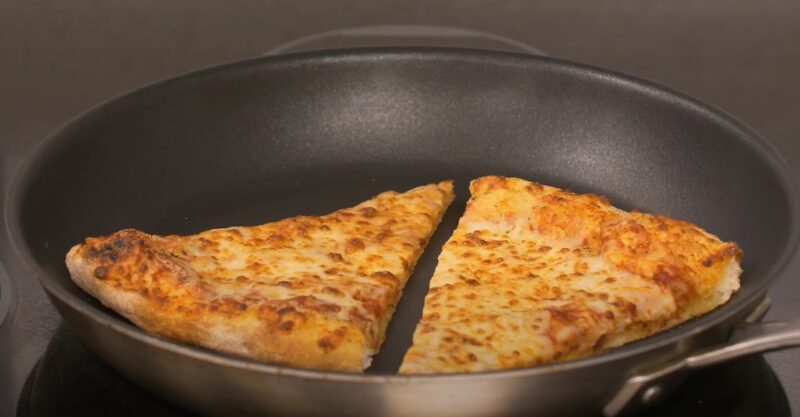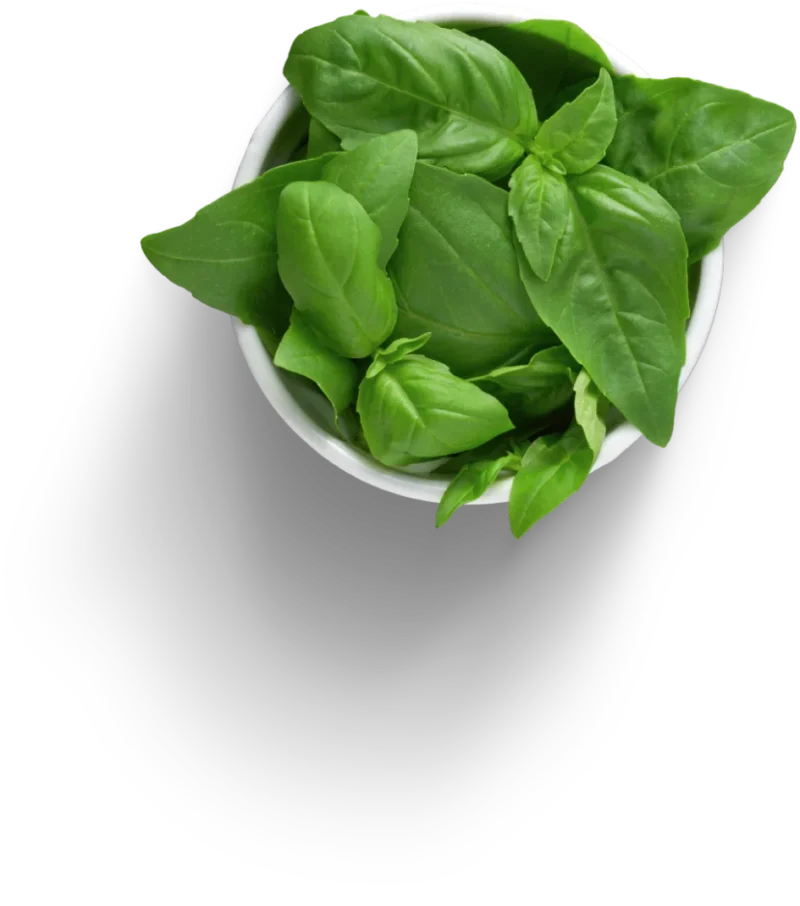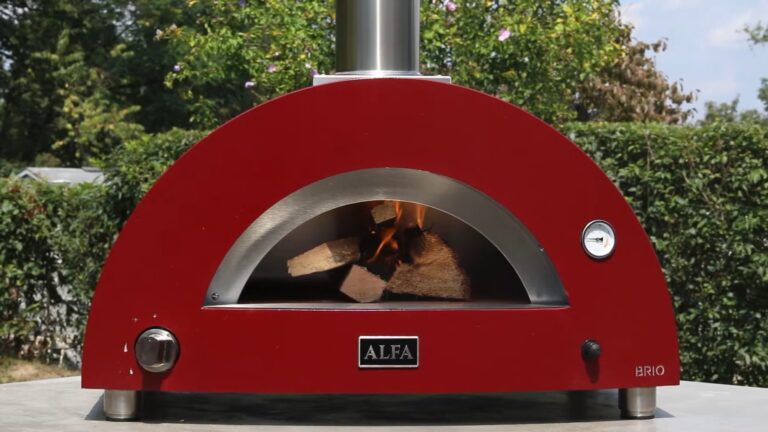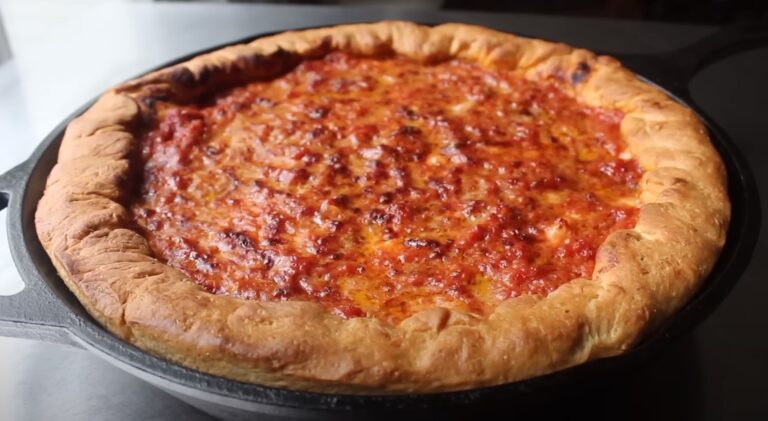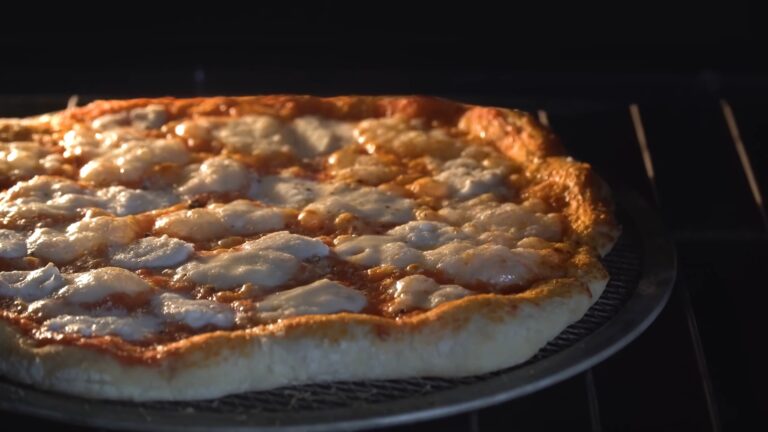Have you ever reheated a slice of pizza only to end up with a soggy, rubbery disappointment? Well, you’re not alone. I’ve been there, and let me tell you, it’s a culinary tragedy that no one should experience.
That’s why I’ve decided to share some insider tips on how to bring back that fresh-from-the-oven magic to your leftover slices. In this blog post, I’ll present the best methods to reheat pizza properly.
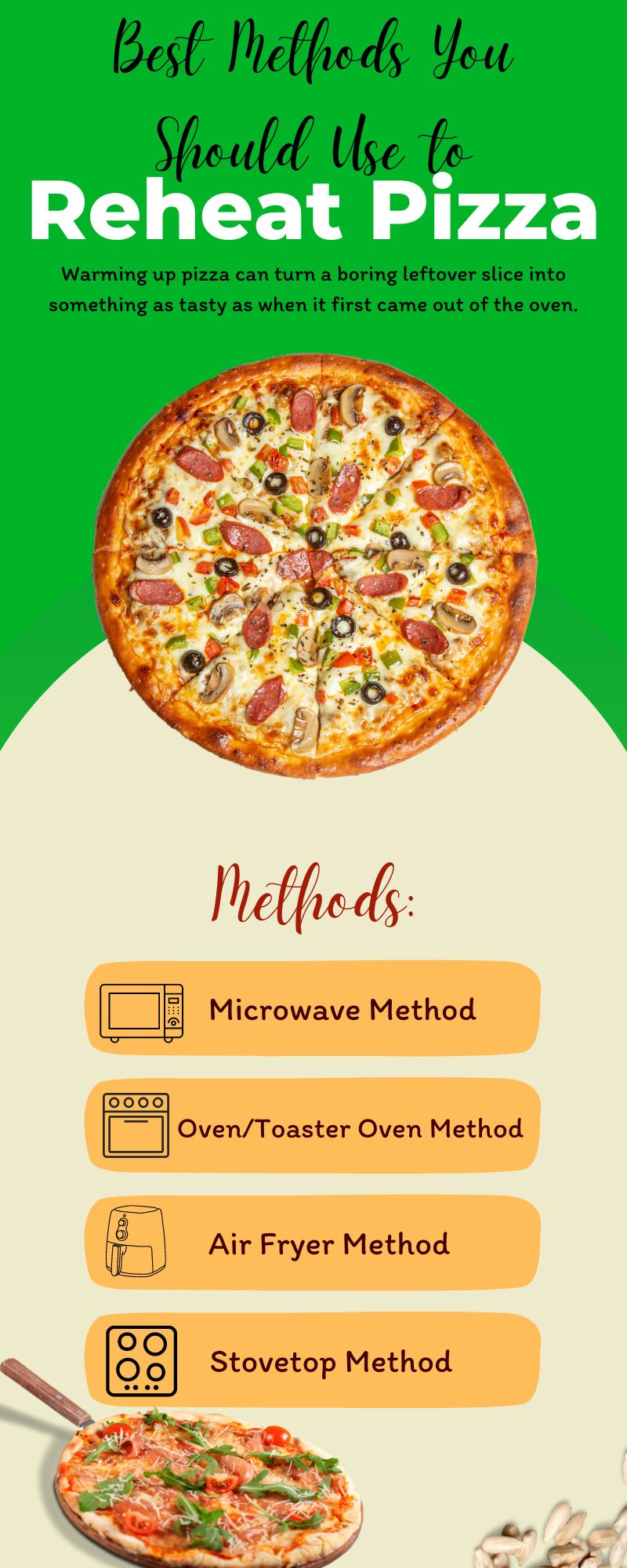
Reheating Methods Ranked
1. Microwave Method
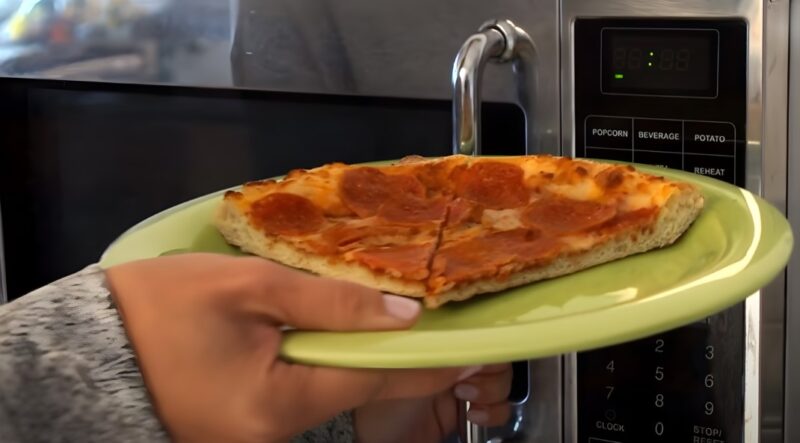
So, whenever I need to heat up some food fast, my microwave is my best buddy—pizza included. It’s the quickest way to get a slice of pizza warm, but honestly, it’s not perfect. The biggest bummer is ending up with a soggy crust.
See, microwaves heat up water molecules, which is why the base of the pizza turns out all moist and chewy instead of crispy. However, it’s definitely a way to serve day-old pizza without feeling too bad about it.
- The microwave method is undeniably quick and convenient. It’s perfect for those in a rush or with limited kitchen resources. The cheese melts evenly, and the toppings warm up sufficiently.
- The crust suffers in the microwave. It becomes soft and chewy, losing its original crisp texture. Additionally, the edges of the pizza might become too hard and chewy as they cool down.
Technique
To microwave pizza, place a slice on a microwave-safe plate or a paper towel. Heat it on high for about 30-60 seconds. The time may vary depending on the microwave’s power and the pizza’s thickness.
Bonus Tip
A clever trick to improve microwave reheating is to place a cup of water in the microwave alongside the pizza. This helps distribute the heat more evenly and prevents the crust from becoming too tough.
2. Oven/Toaster Oven Method
When I reheat pizza, I prefer using an oven or toaster oven because it’s pretty much like giving the pizza a second round of its original baking.
This approach is awesome for getting that crust just right – crispy on the outside – and for making sure the cheese is perfectly melted all over. It’s a hit for everyone who loves their pizza as much as I do.
- The oven method excels in recreating the fresh pizza experience. The crust regains its crispiness, and the cheese melts perfectly. It’s also an excellent way to reheat multiple slices simultaneously.
- The primary downside is the time it takes. Preheating the oven and then reheating the pizza can take upwards of 20 minutes, which might not be ideal for those looking for a quick meal. Additionally, thin-crust pizzas might dry out if left in the oven for too long.
Technique
Preheat your oven to 350°F. Place the pizza slices on a piece of foil or a baking sheet and put them directly on the middle rack. Bake for about 8-10 minutes. If using a toaster oven, the time might be slightly less, around 3-4 minutes.
Bonus Tip
For an extra crispy crust, preheat a baking sheet in the oven and then place the pizza directly on the hot surface. Alternatively, use an oven-safe cooling rack over the sheet pan to elevate the pizza, allowing air to circulate and crisp the bottom.
3. Air Fryer Method
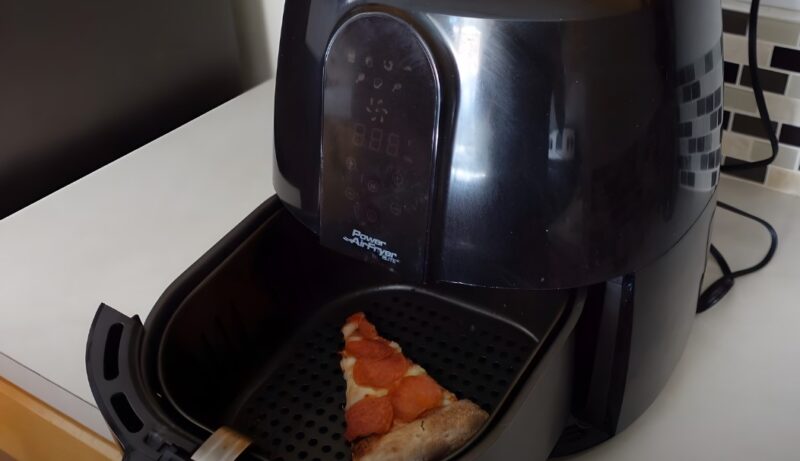
I've noticed a lot of people are really getting into air fryers lately, and after getting one, I understood why. They're awesome for getting your food nice and crispy with hardly any oil.
And let me tell you when it comes to reheating pizza, especially those thin-crust ones, it's a game-changer, and air fryer reheating has become my favorite method. Somehow, it gives the pizza a perfect crispiness that's pretty tough to get with anything else.
- The air fryer method is quick and provides an evenly heated slice with a crispy crust. It’s especially good for thin-crust pizzas, resulting in a delightful cracker-like texture.
- The main limitation of the air fryer is its size. Most air fryers can only accommodate one slice at a time, making it less convenient to reheat multiple slices.
Technique
Set your air fryer to 350°F and cook the pizza for 2-4 minutes. Keep an eye on it, as cooking times can vary depending on the air fryer model and the pizza's thickness.
Bonus Tip
For extra cheesy or greasy pizza, use parchment paper with holes poked in it to allow air circulation and catch drips.
4. Stovetop Method
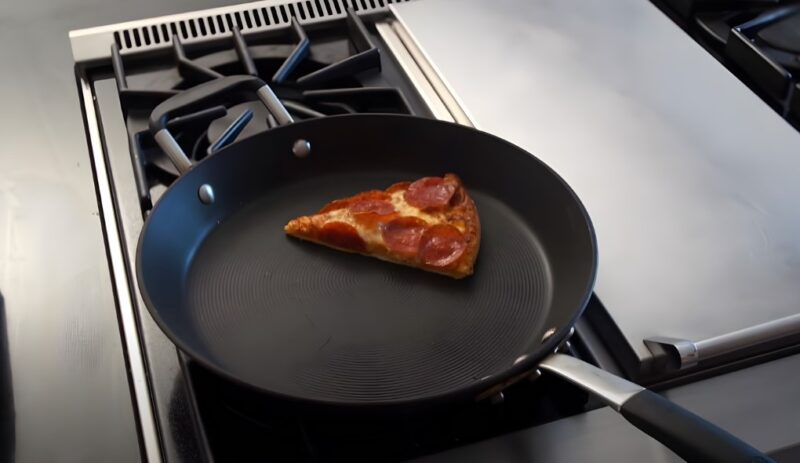
Have you ever tried reheating your pizza on the stovetop? It's not the most obvious way to do it, but it nails the perfect balance between quickness and keeping that pizza tasting awesome. Seriously, you get that crispy crust, and the cheese melts just right. Picture this: your stovetop pizza and a glass of wine. Perfect, right?
- The stovetop method is quick and convenient, and it delivers a pizza with a crispy bottom and hot, melted toppings. It’s also versatile, allowing you to reheat several slices in succession with ease.
- The main drawback is that it’s best suited for reheating a small number of slices. If you’re looking to reheat a large quantity, it can be time-consuming as you can only do a few slices at a time.
Technique
Place the pizza slices in a skillet over medium heat. Cover with a lid and let them warm for about 5 minutes. The cheese should melt, and the bottom should become crisp.
Bonus Tip
For an extra crispy crust, try warming the slices uncovered for a few minutes, then add a teaspoon or two of water to the side of the pan before covering. This creates steam that helps melt the cheese without drying out the toppings.
Additional Tips
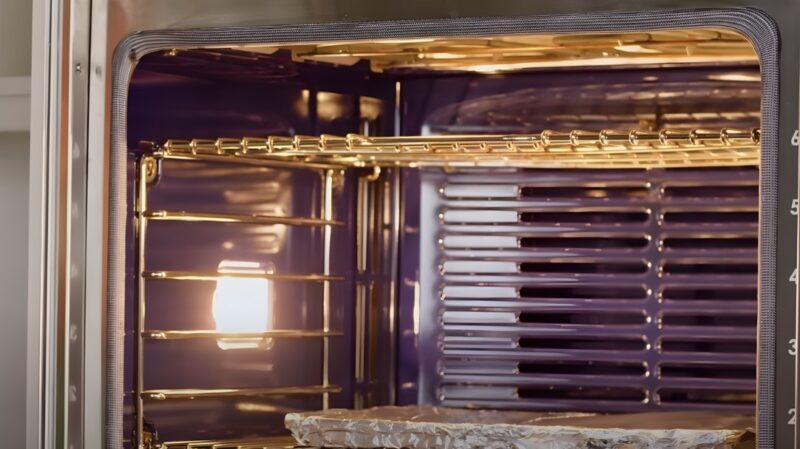
There are a few additional considerations to keep in mind to ensure the best results:
- Type of Pizza: Some pizzas reheat better than others. Pizzas with a lot of toppings or a thick crust might need a different approach compared to a thin-crust pizza with minimal toppings.
- Avoiding Sogginess: To prevent the pizza from becoming soggy, avoid overheating it, especially in the microwave. Using a skillet or oven can help maintain the crust's crispiness.
- Dealing with Special Toppings: Pizzas with delicate toppings like fresh greens or certain cheeses might not reheat well.
- Safety: Ensure that the pizza has been stored properly before reheating. Leftover pizza should be refrigerated and consumed within a few days to avoid foodborne illnesses.
The Bottom Line
Warming up pizza can turn a boring leftover slice into something as tasty as when it first came out of the oven. By picking the best way to reheat it and sticking to these tips, you can get your pizza to have that perfect crispy crust, cheese that's melted just right, and toppings that are heated through perfectly.
I'm confident you're going to find these suggestions super useful.


